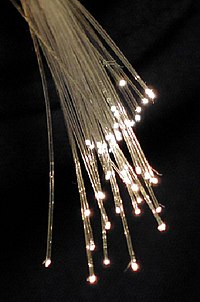
Photo from wikipedia
Black phosphorus stands out from the family of two-dimensional materials as a semiconductor with a direct, layer-dependent bandgap spanning the visible to mid-infrared (mid-IR) spectral range. It is, therefore, a… Click to show full abstract
Black phosphorus stands out from the family of two-dimensional materials as a semiconductor with a direct, layer-dependent bandgap spanning the visible to mid-infrared (mid-IR) spectral range. It is, therefore, a very promising material for various optoelectronic applications, particularly in the important mid-IR range. While mid-IR technology has been advancing rapidly, both photodetection and electro-optic modulation in the mid-IR rely on narrow-band compound semiconductors, which are difficult and expensive to integrate with the ubiquitous silicon photonics. For mid-IR photodetection, black phosphorus has already been proven to be a viable alternative. Here, we demonstrate electro-optic modulation of mid-IR absorption in few-layer black phosphorus. Our experimental and theoretical results find that, within the doping range obtainable in our samples, the quantum confined Franz-Keldysh effect is the dominant mechanism of electro-optic modulation. A spectroscopic study on samples with varying thicknesses reveals strong layer dependence in the interband transition between specific pairs of sub-bands. Our results show that black phosphorus is a very promising material to realizing efficient mid-IR modulators.
Journal Title: Nano letters
Year Published: 2017
Link to full text (if available)
Share on Social Media: Sign Up to like & get
recommendations!